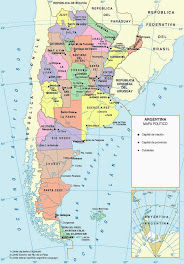
Unlike train lines serving the wealthy northern suburbs of Buenos Aires, the Sarmiento line to the west of La Capital is in a poor state.
The train to Zona Oeste, operated by TBA (Trenes de Buenos Aires) leaves from Once de Septiembre Station.
From the outside, characteristic British charm is clear in the design of the station building. Inside is more Argentine. Disorganized chaos and typically long queues at the ticket booths. The train used to run all the way across the Pampas to Mendoza in the west of the country. Now, 1 peso 35 cents buys a ticket to the end of the line, Moreno, a city just 100km from the capital.
There are four platforms, all with Moreno as its destination. Any trains waiting are usually already full. So many passengers choose to wait on packed platforms for the next arrival. The electronic doors open when it pulls in, and bedlam erupts as those trying to barge their way on for a seat push aside those getting off. Men are often seen climbing through a window to get on more quickly than the rest.
Ten or so minutes after departure time, the badly functioning electronic doors beep and then open and close several times, before the train pulls off.
El Sarmiento (named after former President Domingo Faustino Sarmiento) stops in the neighbourhoods of Caballito, Flores, Floresta and Villa Luro. Crossing General Paz Avenue at Liniers, it leaves the city and enters the province of Buenos Aires.
From there, it bustles on down poorly maintained tracks, originally laid more than a century earlier. A broad gauge of 5ft 6in (1,676mm), and traffic running on the left illustrates British influence. Opposite the station in Haedo, British style terrace houses built for railway workers line the track.
Construction of the Argentine rail network took place primarily from 1870. The British financed the investment and by 1914 it had become the tenth largest system in the world. In 1948, then President Juan Perón nationalised the railway, and the Sarmiento line, formerly operated by British owned Buenos Aires Western Company, became one of six state owned companies managed by Ferrocarrilles Argentinos.
Privatisation during President Carlos Menem’s reforms in 1993, and then the economic crisis in 2001, has seen a great decline in the system. And despite President Nestor Kirchner’s commitment to the railway in 2003, it has never recovered.
 |
| Perón signing the nationalisation doc |
Some areas have suffered more than others though, and difference in quality of the six commuter lines serving the capital city is noticeable. The Julio Roca line to the south and Sarmiento to the west are underfunded, and widely regarded as the worst. To the south and west of the city are also the city’s poorest suburbs.
The aisles in the train are nearly always full to the brim, even in the bicycle carriage, where dope smokers spread out to smoke their marijuana. Passengers will always offer a seat to someone carrying a small child though; a little piece of chivalry still prevalent in Argentina.
Throughout the journey salespeople enter the packed carriages to flog anything from chocolate, to screwdrivers, to fake CDs. There’s etiquette amongst them, and each respects the other as they take turns to shout their pitch. Raggedly dressed children whale in and out of the crowds. They leave religious cards with messages from Saints on passengers’ knees in the hope of exchanging them for milk and bread money.
Not everyone is so honest though. Stopped at stations, it is common to hear of thieves grabbing a mobile phone and jumping off the train as the electronic doors lock shut. Or petty criminals on platforms, reaching through open windows and stealing a lady’s handbag as the train pulls out.
At Merlo, three stops from the end of the line, half the passengers get off to make the connection to Lobus. They are bunched together as the turn-gates fail to cope. The rest go onto Moreno to complete the one and a quarter hour journey.
 El Sarmiento is an example of a privately run system in which consumers have no choice. Investment by TBA is low and despite constant protests by commuters, quality continues to decline. It is argued that residents in the richer suburbs to the north would simply not tolerate this kind of service, and for now they don’t have to.
El Sarmiento is an example of a privately run system in which consumers have no choice. Investment by TBA is low and despite constant protests by commuters, quality continues to decline. It is argued that residents in the richer suburbs to the north would simply not tolerate this kind of service, and for now they don’t have to.








interesting stuff. Makes me look at the Jubilee line with a whole new affection.
ReplyDeleteTerry.